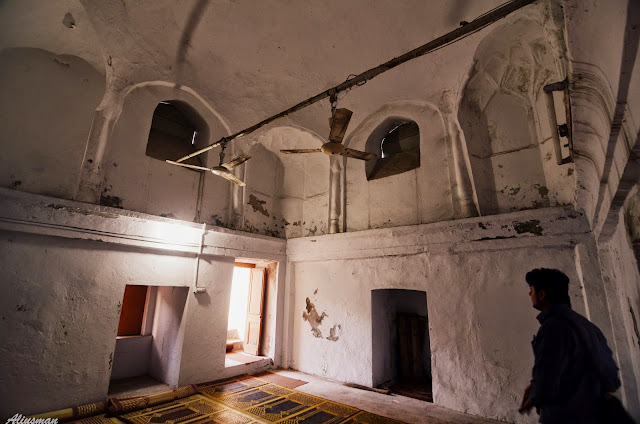Thursday, 21 May 2015
Kohrian is a small village, which is located hardly 3 kilometers from the BRB
canal on Barki Road. I came to know about the presence of an old Sikh Samadhi in this
village. So, we decided to pay a visit to this edifice as well; in our recent
exploration of Sikh Era architecture on the outskirt of Lahore. The approach road to
Kohrian was in very bad condition. The
current Samadhi is located in the middle of the village. Sadly, it was half demolished. Locals told
that this was done in order to widen the road. The most exciting thing in
this Samadhi was the interior fresco paintings. These were so beautiful that almost
made me spellbound for a moment. It was really sad to see this great heritage
in this bad condition. Many questions arose in my mind after this; what our
archeological department is doing? What the hell they are not doing anything
for protecting them. There are many such structures that will vanish in a few
years and the next generations will not even know that such artwork exists
in Pakistan.
Kohrian is a quaint village nestled just 3 kilometers away from the BRB canal on Barki Road. During our recent exploration of Sikh Era architectures on the outskirts of Lahore, we stumbled upon the knowledge of an old Sikh Samadhi residing within this village. Intrigued by this historical gem, we decided to pay it a visit.
However, our excitement was dampened by the deplorable state of the approach road leading to Kohrian. It was riddled with potholes and in dire need of repair. Despite the challenging journey, we pressed on and finally reached the village, where the Samadhi stood proudly in the center. Unfortunately, what we beheld was a heart-wrenching sight—the Samadhi was partially demolished, with the locals informing us that this sacrilege was done to widen the road.
Despite the devastation, the interior of the Samadhi held a breathtaking surprise. Its walls were adorned with intricate fresco paintings, each stroke of the brush showcasing remarkable artistry. As I stood there, I couldn't help but be mesmerized by the sheer beauty of the artwork, momentarily spellbound by its presence.
However, the sorrow of witnessing this magnificent heritage site in such a dilapidated state weighed heavily on my heart. Numerous questions began to swirl in my mind, primarily concerning the actions—or lack thereof—of our archeological department. What efforts were they made to protect and preserve these invaluable relics? It was disheartening to realize that structures like this Samadhi were slowly fading away, their existence likely to be forgotten by future generations.
The urgency to take action and safeguard our cultural heritage grew stronger within me. I pondered upon the impending loss of many such structures, their disappearance a haunting reality. If left unattended, future generations may never have the opportunity to witness the artistic marvels that once thrived in Pakistan. It was a somber reminder that the responsibility to protect and preserve our historical treasures rested on the collective efforts of society, the government, and the archeological department alike.





























.jpg)

























